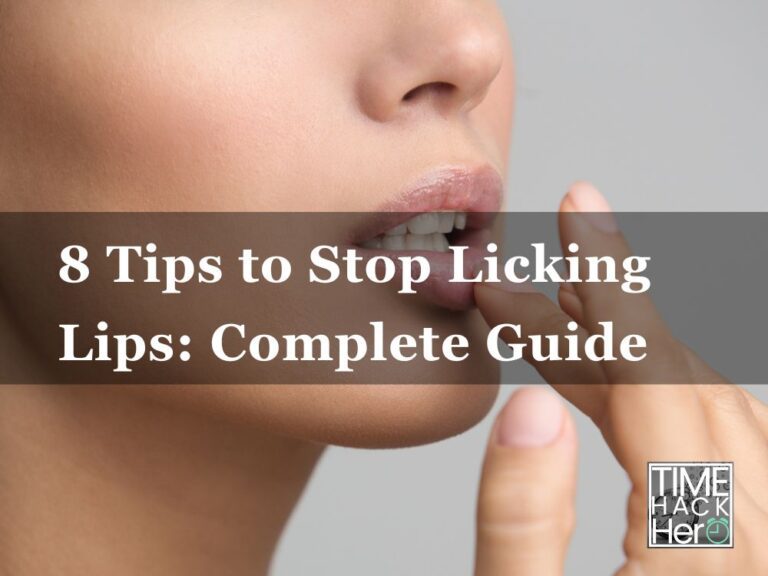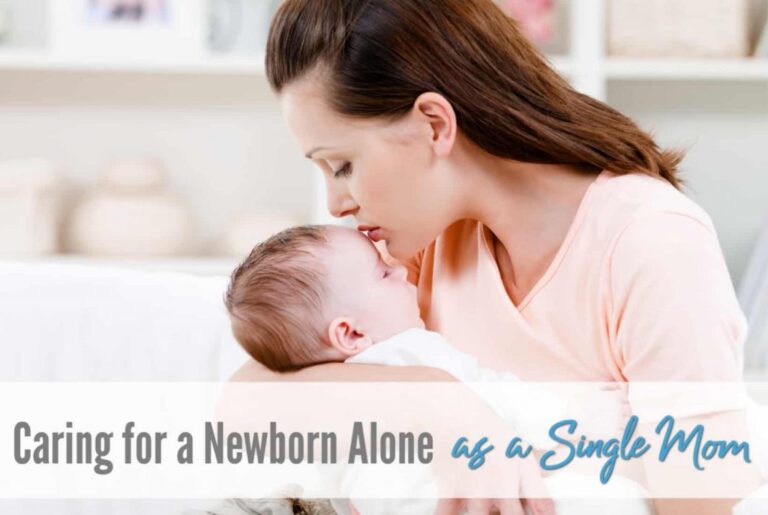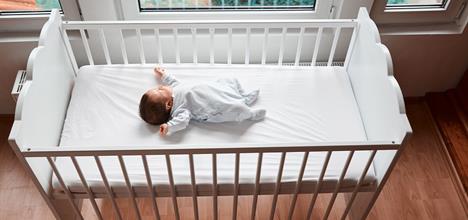How to Clean Newborn Nails: Hassle-Free Tips!
To clean newborn nails, use baby nail scissors designed to prevent skin cuts and trim the nails after a bath when they are softer. Additionally, a soft nail brush can be used to clear dirt and germs from under the tips, and make sure to dry the hands and nails thoroughly with a clean towel to prevent fungal infections.
It is important to keep the nails clean and trimmed to avoid infections.
1. Importance Of Cleaning Newborn Nails
Newborn babies have delicate and fast-growing nails that require regular cleaning to ensure proper hygiene and avoid any potential harm. Cleaning newborn nails is essential for several reasons:
1. Protecting Baby From Scratching Themselves
Newborn babies have little control over their motor skills and can accidentally scratch themselves, especially on their face and other sensitive areas. By keeping their nails clean and trimmed, you can minimize the risk of these scratches and prevent any potential discomfort or skin irritations.
2. Preventing Infections And Germs Buildup
Newborn nails can easily accumulate dirt, bacteria, and other harmful germs. If not cleaned properly, these pathogens can lead to infections, especially if they come into contact with the baby’s mouth or eyes. Regular cleaning ensures that these germs are effectively removed, reducing the risk of infections and keeping your baby healthy.
3. Promoting Good Hygiene Habits
By cleaning your newborn’s nails from an early age, you establish good hygiene habits that will benefit them in the long run. It teaches them the importance of cleanliness and self-care, setting the foundation for a lifetime of good hygiene practices.
To clean your newborn’s nails, follow these simple steps:
- Gently hold your baby’s hand or foot, ensuring they are calm and relaxed.
- Use a soft baby nail brush or a clean, soft cloth to gently remove any dirt or debris from under the nails.
- If needed, trim your baby’s nails using baby nail clippers or scissors specifically designed for infants. Ensure you only trim the nails and not the surrounding skin.
- After trimming, use a clean towel to thoroughly dry your baby’s hands and nails to prevent any moisture-related issues.
- Consider using baby-safe emery boards or files to smooth any rough edges or snags.
- Repeat this process regularly, preferably after a bath when the nails are softer and easier to trim.
By prioritizing the cleaning of your newborn’s nails, you can ensure their overall well-being and establish healthy hygiene practices early on. Remember to approach the task with care and gentleness, making it a comforting experience for both you and your baby.

Credit: www.whattoexpect.com
2. Recommended Tools For Cleaning Newborn Nails
When it comes to cleaning your newborn’s nails, having the right tools is crucial. Using the appropriate tools will ensure that you can clean and trim your baby’s nails safely and effectively. Here are three recommended tools for cleaning newborn nails:
H3baby Nail Scissors – Designed To Prevent Accidental Skin Cuts/h3
Baby nail scissors are the perfect tool for trimming your baby’s nails without the fear of accidentally cutting their delicate skin. These scissors are specially designed with rounded tips and a curved design to provide maximum safety. The blunt ends reduce the risk of injury, making them ideal for new parents who may be nervous about cutting their baby’s nails for the first time.
H3soft Nail Brush – Good For Clearing Dirt And Germs/h3
Another useful tool for cleaning newborn nails is a soft nail brush. This brush is gentle on your baby’s delicate skin and is perfect for removing dirt and germs that can accumulate under their nails. It is recommended to trim your baby’s nails after a bath, as the nails are softer, making it easier to clean and trim. Remember to use a clean towel to dry their hands and nails thoroughly, as moisture can lead to fungal infections.
H3nail Files – Ideal For Smoothing Nails And Removing Sharp Edges/h3
Nail files are excellent for smoothing the edges of your baby’s nails and removing any sharp or jagged edges. They are a safe alternative to using clippers or scissors, as they have a finer texture, ensuring that you don’t accidentally cut your baby’s delicate skin. Using a nail file is also ideal for parents who are uncomfortable with the idea of cutting their baby’s nails. Gentle filing can gradually shape the nails, making it a stress-free process for both baby and parent.
Having these essential tools on hand will make the task of cleaning and trimming your newborn’s nails much more manageable. Remember to always proceed with caution and take your time when cleaning and trimming your baby’s nails. By using these recommended tools, you can ensure that your baby’s nails are clean and well-maintained, preventing any potential infections.
3. Steps To Clean Newborn Nails Safely And Effectively
Cleaning your newborn’s nails is an important part of their hygiene routine. Since babies tend to have delicate and fast-growing nails, it’s essential to follow the right steps to ensure their nails are clean and prevent any accidental nicks or cuts. Here are three simple steps to clean newborn nails safely and effectively:
1. Trim Nails After A Bath When They Are Softer
Trimming your baby’s nails after a bath is recommended as the nails are softer, making it easier to trim without causing any discomfort. The warm water during the bath helps in softening the nails, reducing the chances of accidental cuts. Ensure you have a steady hand and use proper equipment to prevent any accidental injuries.
2. Use Nail Clippers Or Scissors Made For Infants
When it comes to choosing nail clippers or scissors for your baby, it’s crucial to opt for those specifically designed for infants. These tools are made with rounded tips to prevent skin from being cut and are smaller in size to suit their tiny nails. Make sure the clippers or scissors are clean and sanitized before use. Always use gentle and controlled movements while trimming their nails.
3. Ensure Plenty Of Light And Choose A Calm Environment
Proper lighting is essential to get a clear view of your baby’s nails while trimming them. Choose a well-lit area or use additional light sources to ensure you can see the nails clearly. Additionally, it’s crucial to create a calm and distraction-free environment during the nail-cleaning process. This will help minimize the chances of accidental cuts and make the experience more comfortable for both you and your baby.
After you have trimmed your baby’s nails, it’s important to take an extra step to remove any remaining dirt or germs. You can either file or brush their nails gently to ensure they are clean and free from any debris. This additional step will help keep their nails hygienic and prevent any potential infections. Remember to use gentle motions and avoid applying excessive pressure to avoid any discomfort to your baby.
By following these three steps – trimming nails after a bath, using infant-specific nail clippers, and ensuring plenty of light and a calm environment – you can safely and effectively clean your newborn’s nails. Maintaining good nail hygiene is an important part of caring for your baby’s overall well-being.
4. What To Do If You Accidentally Cut The Baby’s Skin
Accidentally cutting a baby’s skin while trimming their nails can be a scary situation, but there are steps you can take to address it. If this happens, use an antiseptic cream to prevent infection and keep the area clean. A baby emery board or soft nail file can help smooth the nails without causing any harm.
Accidents happen, and if you accidentally cut your baby’s skin while trimming their nails, it’s important to remain calm and take immediate action. Here are the steps you can follow to care for the injured area:
Remain Calm And Soothe The Baby If They Feel Discomfort
It’s natural to feel upset or worried if you accidentally cut your baby’s skin. However, it’s important to remain calm and composed to comfort your baby. Babies can sense your emotions, so try to soothe them by holding them close, speaking softly, or engaging in gentle rocking motions.
Clean The Injured Area With Mild Antiseptic Solution
One of the first steps you should take to prevent infection is to clean the injured area with a mild antiseptic solution. You can use a cotton pad or swab soaked in the solution to gently cleanse the cut. Make sure to be gentle to avoid causing any further discomfort to your baby.
Apply A Clean Bandage Or Use Sparingly Antiseptic Cream, As Recommended By A Healthcare Professional
Once you have cleaned the injured area, you can apply a clean bandage to protect it from further harm. If you don’t have a bandage on hand, you can also use sparingly antiseptic cream as recommended by a healthcare professional. Be sure to follow their instructions carefully to ensure proper healing.
Remember to check the injured area regularly for any signs of infection, such as redness or swelling. If you notice any worrisome symptoms, it’s best to consult a healthcare professional for further guidance and proper treatment.
5. Tips For Maintaining Healthy Newborn Nails
Maintaining healthy newborn nails can be done by using a soft nail brush to remove dirt and germs and trimming the nails after a bath. It is important to dry the nails thoroughly and use baby nail scissors or infant nail clippers for a safe and easy trim.
Trim regularly to prevent nails from becoming too long
Keeping your newborn’s nails at an appropriate length is crucial in maintaining their hand hygiene. Trim their nails regularly using baby nail clippers or scissors made especially for infants. It is recommended to cut the nails if they are longer than the tips of their fingers. Some babies may have faster nail growth, so it is essential to monitor their nails consistently. The best time to trim your baby’s nails is after a bath when the nails are softer. Ensure you have adequate light while trimming to avoid any accidental cuts.
Keep hands and nails dry to avoid fungal infections
Nail care for newborns includes keeping their hands and nails clean and dry to prevent fungal infections. Use a clean towel to gently dry your baby’s hands, including the nails, after bathing or washing. Moisture can lead to the growth of fungi, so it is important to keep the nails dry at all times. By practicing good hand hygiene and maintaining dryness, you can reduce the risk of fungal infections and other related complications.
If you wish to add some color to your newborn’s nails, opt for baby-friendly, non-toxic nail polish. Choose nail polishes that are specifically formulated for babies to ensure their safety. These polishes are commonly free from harmful chemicals such as formaldehyde and formaldehyde resin, which can be potentially harmful to your baby’s delicate skin and nails. Remember to follow the instructions provided on the nail polish packaging and remove the polish as soon as it starts to chip or wear off.
Monitor baby’s nails for any signs of infection or abnormalities
Regularly inspect your baby’s nails for any signs of infection or abnormalities. Look out for redness, swelling, or discharge around the nails, which may indicate an infection. If you notice any changes or abnormalities, it is important to consult a healthcare professional for proper diagnosis and treatment. Early detection and prompt action can help prevent any complications and ensure the healthy development of your baby’s nails.
Frequently Asked Questions Of How To Clean Newborn Nails
How Do You Clean Dirty Nails On A Newborn?
To clean dirty nails on a newborn, use a soft nail brush to remove dirt and germs. Trim the nails after a bath when they are softer. Dry the hands and nails thoroughly to prevent fungal infections. Keep the nails clean to avoid infections.
How Do You Take Care Of Newborn Nails?
To take care of newborn nails, use a soft nail brush to clean dirt and germs. Trim nails after a bath when they are softer, and dry nails thoroughly. Use a nail file or emery board to smooth the nails.
Trim with baby nail scissors or clippers made for infants. Cut nails if they are longer than the tips of the fingers.
Can I Cut My 1 Week Old Baby’s Nails?
Yes, you can cut your 1-week old baby’s nails. Use baby nail scissors to prevent cutting the skin accidentally. It’s recommended to trim nails after a bath when they are softer. Dry the hands and nails with a clean towel to prevent fungal infections.
Keep the nails clean to prevent infections.
Is It Safe To Paint A Newborn’s Toenails?
It is not safe to paint a newborn’s toenails. The chemicals in nail polish, such as formaldehyde, can be harmful to the baby’s health. It is best to keep their nails clean and trimmed to prevent infections.
Conclusion
To keep your newborn’s nails clean and prevent infections, it’s important to follow proper nail care techniques. Use a soft nail brush to gently remove dirt and germs that accumulate under the tips. Trimming their nails after a bath, when they’re softer, can make the process easier.
Remember to dry their hands, including the nails, thoroughly to avoid fungal infections. Whether you use a nail file or baby nail clippers, ensure you have plenty of light and a steady hand. By consistently maintaining clean nails, you promote your baby’s overall health and well-being.







